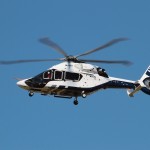
Stable, extremely easy, barely any vibrations, smooth like a flying carpet. The first words of the pilot after the landing are very optimistic and encouraging.
The model H160 by Airbus Helicopters, previously called prototype X4, made its maiden flight on Saturday 13th, June, at the main plant in Marignane, southern France. With 24°C and 5 kt of wind, the weather was rather nice.
With the introduction of many new technologies, everyone tries to hunt for the hints, and we will give it a try as well.
First, unusual control surfaces appeared, such as a rudder on the tail fin. The rudder can be seen on the photo in forward flight below:
However, what appears to be a separate piece on the lower part of the horizontal stabilator is fixed (B. Fujarski in “4 Rotors”, issue of Summer 2015). We can assume that it allows to use more power for the main rotor in fast forward flight, while the anti-torque is ensured by the huge tail fin instead of the fenestron.
With 6 metric tons MTOW, the H160 is slightly heavier than the H155 (4,5 t) and completes the product range, closing the gap under the H175.
The helicopter is powered with 2 Arrano 1A, newly developped by the company Turbomeca. However, it seems that the gear box stays the same as for the H155. The rotor blades are, of course, brand new. They were introduced by Eurocopter with the programme “Blue Edge” during the year 2010.
These rotor blades were later observed on a modified H135 in Germany.
Another curious feature is located on the top of the tail, in front of the strobe light.
Finally, the canted fenestron will provide better support for a correct weight and balance, compensating the heavy tail that might be pushing the center of gravity to the rear.
The video below displays the second test flight, where the speed of 130 kt was reached.
Let’s wait now for more flights and even greater speeds!
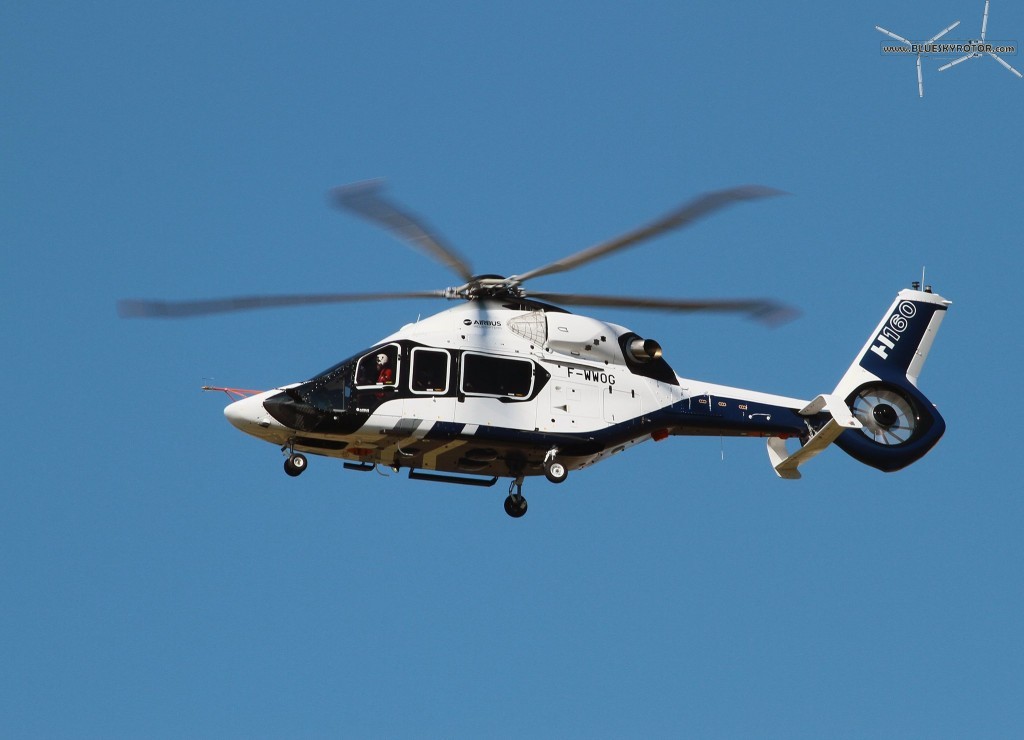
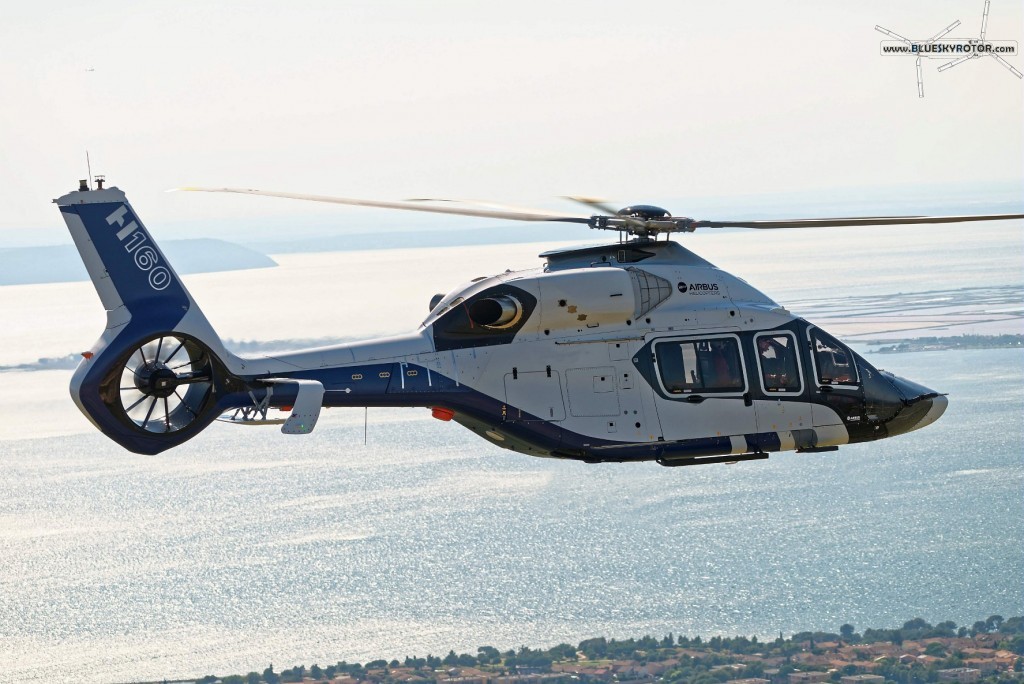

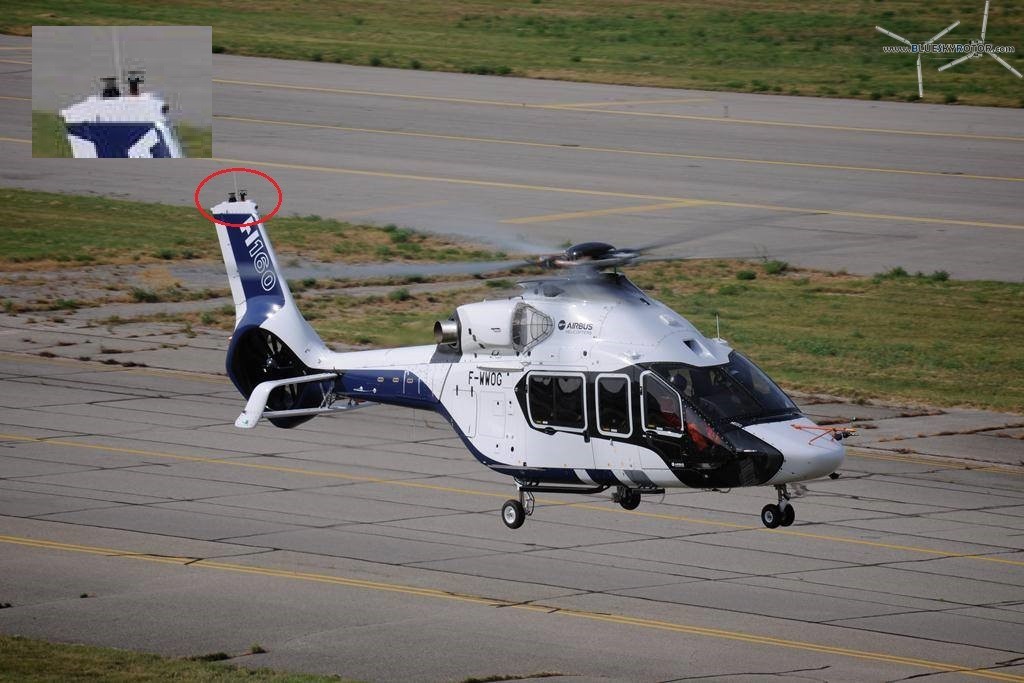
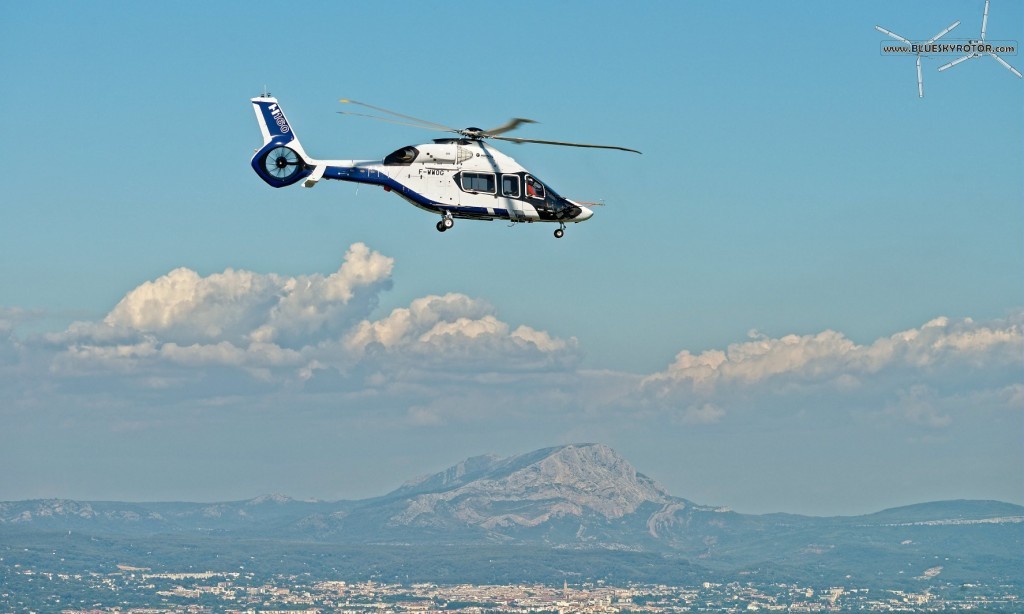
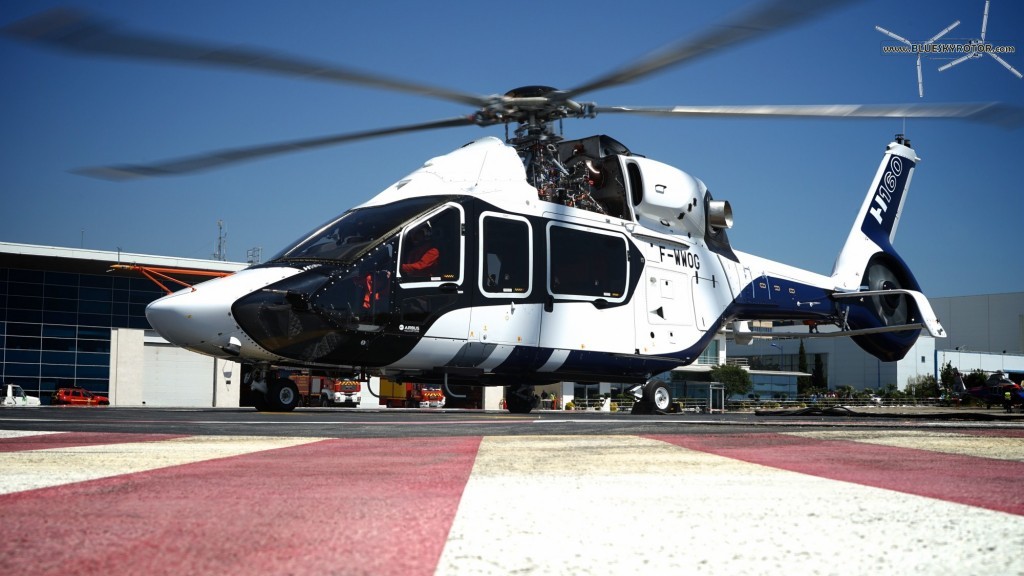
Sorry, the comment form is closed at this time.